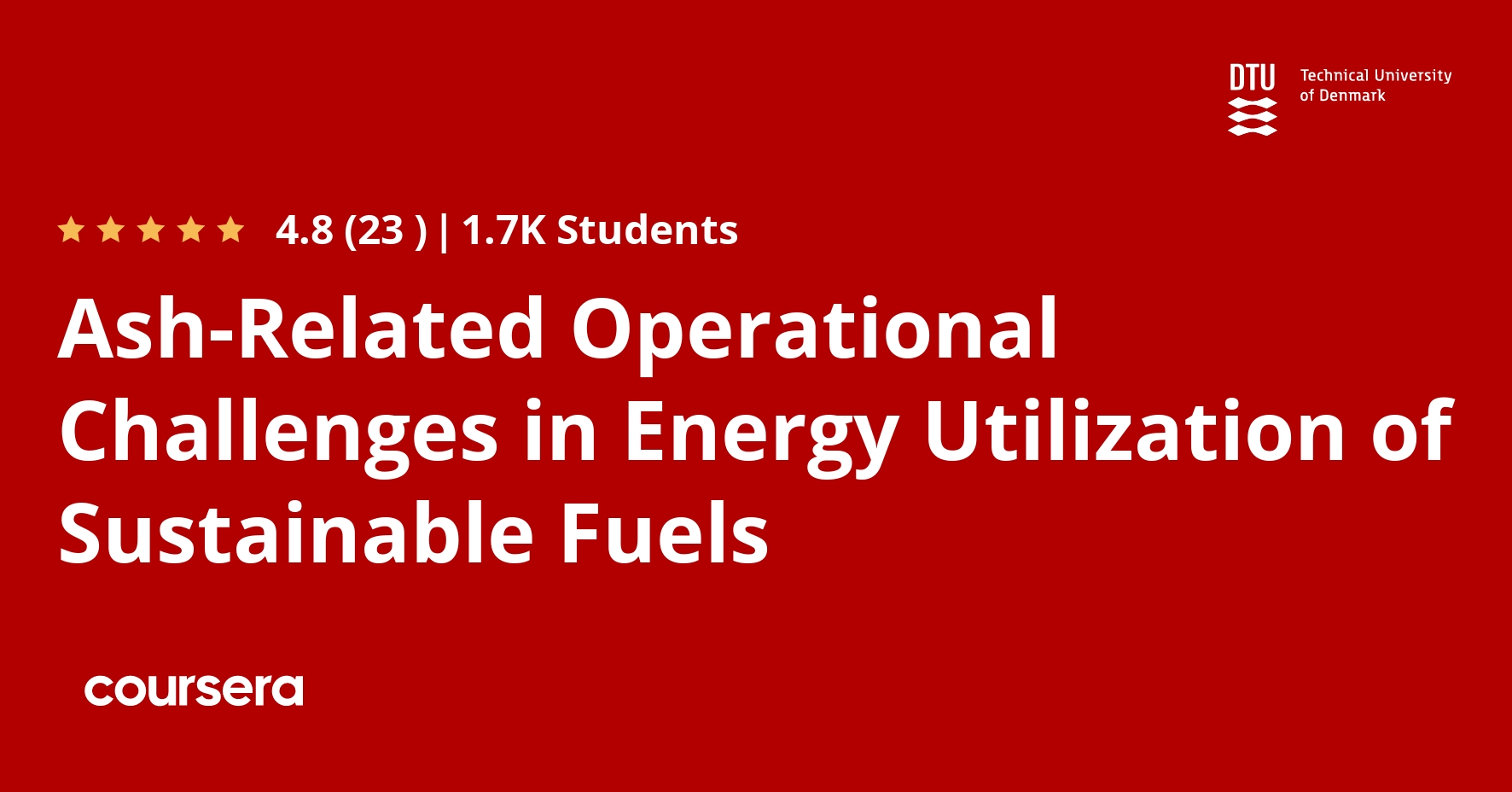Description
The basic idea behind this MOOC, is to present recent data on fuel characterization, slagging, fouling, corrosion, and trace element transformations, in a course that can be readily provided for students and industry people.
This ensures understanding and application of the research, and provides the students and industry with a forum for discussion of the very latest research results, as well as feedback from industry to the research group at DTU, on important new research subjects in the field.
The specific aim of the MOOC, is that students will be able to;
Explain basic physical and chemical differences between solid fuels like coal, biomass, waste etc., be able to characterize solid fuels, and to interpret fuel analyses of them
Interpret and utilize data from advanced fuel and ash analyses (SEM, DTA/TGA, chemical fractionation, ash melting temperatures)
Describe chemically and physically, how critical ash-forming elements are released to the gas phase, the mechanisms for formation of aerosols and fly ash particles, and explain how ash is transported from bulk gas to heat transfer surfaces
Quantify the processes of deposit build-up, sintering and shedding
Explain the fundamentals of high-temperature corrosion in thermal fuel conversion systems
Can calculate viscosities as a function of temperature and composition, temperature profiles in a deposit, rates of deposit build-up and sintering, as well as porosity changes vs. time.
What you will learn
Brief MOOC Introduction and Incitement for Following This
This module will introduce the basic content of the course to the student.
Fuel and Ash Chemistry and Characterization
Module 2 (Fuel and Ash Chemistry and Characterization) is subdivided into 7 lessons, dealing with fuel and ash characterization, and is meant as an introduction to different techniques, applied to characterize fuels or ash samples. Both simple techniques like proximate and ultimate analyses, but also advanced techniques like Simultaneous Thermal Analysis (STA) analysis of ash fusion and Scanning Electron Microcospy (SEM), are introduced. There is also included an introduction to online fuel databases.
Release of Critical Ash-Forming Elements
This module gives an introduction to how critical ash-forming elements like K, S, and Cl, but also Na, Zn and Pb, are released from fuels, during thermal conversion.Module 3 (Release of Critical Ash-Forming Elements) deals with release of critical ash-forming elements, mainly K, S and Cl, but also Na, Zn, and Pb. The module has four lessons and deal with both fixed-bed and entrained flow release quantification. Further, there is a thorough introduction to K-release from K-Ca-P-rich ashes.
Formation of Fly Ash and Aerosols
As soon as the critical ash-forming elements have been released to the gas, formation of fly ash and aerosols begin, which is the subject of Module 4 (Formation of Fly Ash and Aerosols). This module is subdivided into 5 lessons, introducing both fundamental and detailed physical aspects of residual fly ash formation, as well as formation of and harmful health effects of combustion-derived aerosols. Finally, there is a thorough introduction to the pioneering Danish full.scale aerosol formation studies at Haslev respectively Slagelse CHP.







